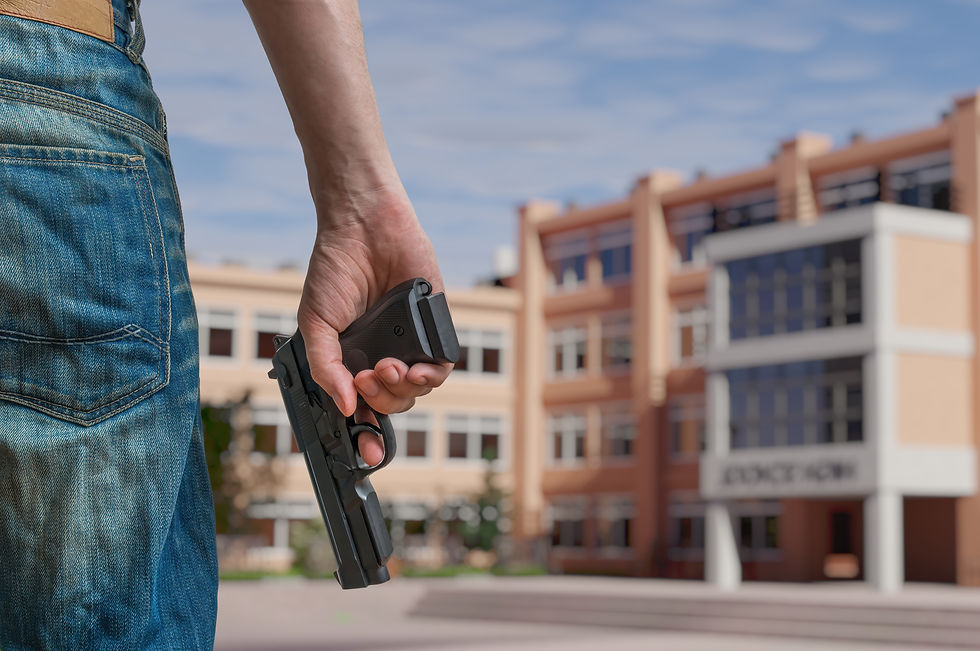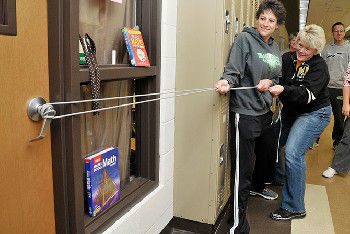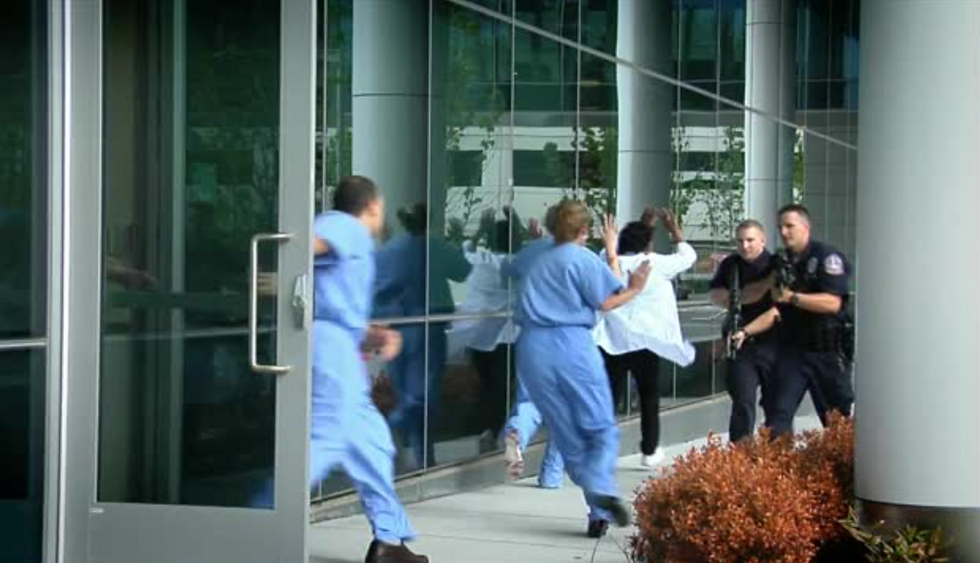Bulletproof Your Classroom: Top 10 Safety Hacks for Teachers
- gene423
- Jun 18, 2023
- 4 min read

In today's uncertain world, the risk of active shooter situations in schools is a sad reality. While the overall goal is to prevent such incidents entirely, preparedness is key. This article provides ten practical, actionable tips that teachers can use to set up their classrooms in a way that enhances safety during an active shooter situation. Remember, these tips don't just ensure your safety, but also that of your students – our future.
1. Consistently Lock Doors
First and foremost, regularly locking your classroom doors can create an effective barrier against intruders. This simple act can buy critical time for law enforcement to respond. Check your door locks every day, and create a routine for yourself that ensures you don't forget this important safety measure. It may feel inconvenient at times, but the benefits far outweigh the minor inconvenience.
2. Window Coverings: Your Shield Against Visibility

Your classroom windows should always be covered with blinds or curtains. In an active shooter situation, pulling these closed immediately can obscure the visibility into the classroom, making it less of a target. Consider investing in blinds or curtains that are easy to close quickly, and train your students to help with this task in an emergency.
3. The Safe Corner: A Designated Safety Zone
Every classroom should have a designated 'safe corner.' This corner should be out of sight from the door and windows. In case of an emergency, instruct students to hide in this corner. Remember, this shouldn't be a space of fear, but a place of safety. Teach your students about the safe corner in a calm, reassuring manner so they understand its importance without feeling constant fear.
4. Clear Doorway: The Route to Quick Response
Keeping the doorway area clear of desks or other furniture not only ensures a swift exit if required, but also allows law enforcement to enter quickly. Regularly check that this path is clear and that no clutter has accidentally blocked the way. This could mean rethinking how you position furniture and encouraging students to keep their belongings in designated areas.
5. An Emergency Kit: Your Classroom Lifeline

A well-stocked emergency kit can make a significant difference in a crisis. Your kit should include first aid supplies, water, a classroom roster, and other emergency items such as a flashlight and batteries. Keep this kit in an easily accessible location and check the contents regularly to ensure nothing is missing or expired.
6. Understand Your Surroundings: The School Layout
Familiarize yourself with the overall school layout, including classroom numbers and hallway names. Knowledge of the nearest exit to your classroom can be crucial in an emergency. In a crisis, information is your best friend. If you are intimately familiar with your surroundings, you can make better survival decisions.

7. Your Position: Far from the Door, Close to Safety
Consider placing your natural teaching position as far from the door as possible. In past school shooting incidents, teachers, as classroom leaders, are typically the first target of an attack. Positioning yourself away from the door can buy additional time. Remember, your students look to you for guidance in such situations; your ability to advise them is crucial.
8. Plan Your Barricade: Prepping for a Violent Intruder

Part of setting up your classroom is understanding how to barricade the room effectively. Consider the arrangement of your furniture, and whether it facilitates a quicker barricade. Heavy items such as file cabinets can be placed strategically to support a quick barricade.
9. Proper Barricading: The Right Technique for Your Door

Every door is unique, so it's essential to understand the best way to barricade your specific door. Doors that open outward will require a different technique than those that open inward. Explore the best techniques and teach them to your older students so they can assist in a crisis.
Check out our ULTIMATE GUIDE TO BARRICADING A DOOR GUIDE
10. Understand Your Classroom's Limitations
Every classroom has limitations, and understanding them can make a significant difference in an emergency situation. Fixed windows are nearly impossible to break, so don't count on escaping through them if they don't open. Some furniture may be too heavy to move quickly for a barricade. Regularly check your locks to ensure they are functioning correctly.
Conclusion
Preparation and awareness can be our best tools in the face of potential danger. These ten tips provide a framework for teachers to enhance classroom safety in the face of an active shooter threat. Remember, the goal is not to foster a climate of fear, but one of safety, security, and preparedness. Stay safe, and keep teaching with passion and care.
Bonus Tip: Ongoing Drills and Training
Aside from these ten tips, regularly conducting drills and participating in safety training programs should be an integral part of school life. These drills can help students understand the steps to take in an emergency situation without inducing panic. The safer students feel, the more they can focus on what's truly important - learning and growing.
With that, remember to stay vigilant, stay safe, and keep nurturing the future of our society in the safest environment possible.
Note: This guide is meant to be a helpful resource, but it is important to adhere to your specific school's safety protocol and to seek out professional training and advice on this topic.
DISCLAIMER: This post is designed to provide helpful tips for classroom safety in an active shooter situation. However, it cannot guarantee absolute safety. Always follow the safety guidelines and procedures established by your school or district, and reach out to law enforcement and security professionals for further advice.






Comments